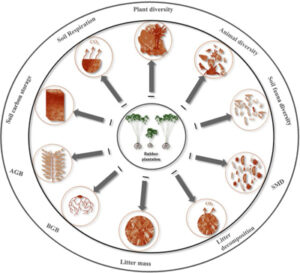Chinese Academy of Sciences announces interdisciplinary and systematic overview of the ecological consequences of rubber plantations
Beijing, China – According to statistics, more than two million hectares of rubber plantation have been established in the tropics in the last decade globally. It has improved the economic status of farmers, but altered the habitat’s ecology and ecosystem functions. However, few studies have focused on the impacts of rubber plantations on the ecosystem functions of rubber plantations and no clear overview is available.
In a study published in Science of the Total Environment, researchers from the Xishuangbanna Tropical Botanical Garden (XTBG) of the Chinese Academy of Sciences presented an interdisciplinary and systematic overview of the ecological consequences of rubber plantations.
The researchers conducted an inclusive review of the ecosystem functions of rubber plantations, including soil carbon storage, above ground biomass (AGB) and below ground biomass (BGB), litter production and decomposition, respiration and biodiversity (plants, animals, soil fauna and microbes).
They first compiled the history of rubber plantations and their expansion based on data obtained from the Food and Agriculture Organization of the United Nations and presented the visible differences between forests and rubber plantations. Then they explored and summarized the impacts of rubber cultivation on each ecosystem function.
The replacement of forests with rubber plantations is altering multiple ecological processes and ecosystem functions. Compared with the tropical forests, all ecosystem functions showed lower values in the rubber plantation. The impacts of rubber plantations on ecosystem functions are consistently negative, irrespective of plantation age.
According to the researchers, the protection of diversity-rich forests is the best strategy for the restoration of the majority of ecosystem function in the rubber growing regions.
They also demonstrated that rubber based polycultures and agroforestry systems promote ecosystem functions, such as nematode diversity, compared to rubber monocultures.
“Therefore, further efforts should be made to incorporate more species with rubber and understand their interactions,” said LIU Wenjie, principal investigator of the study.

